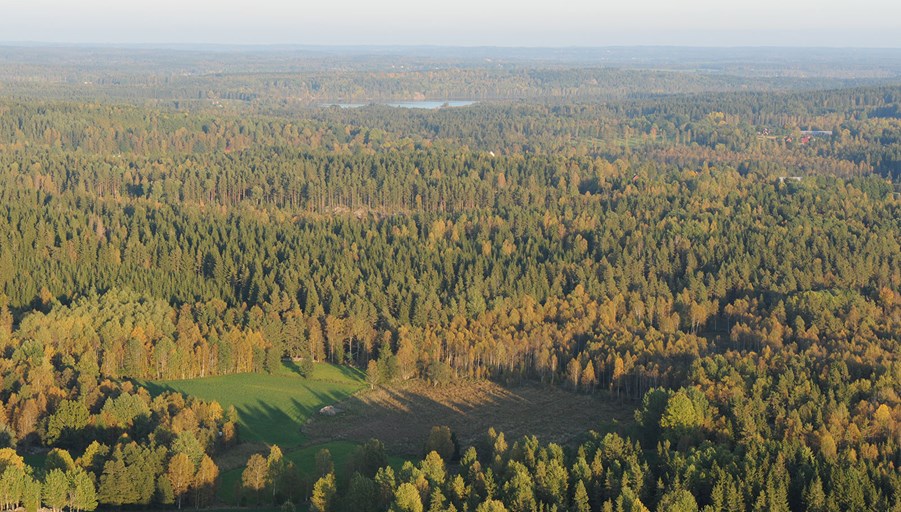
The swedish forest industry is driving growth in the world’s bioeconomy. And the forest and forest products are part of the solution to one of the biggest challenges of today - global warming.
A growing forest binds carbon dioxide and when discussing biodiversity, we need to understand the climate value of the forest and forest products. To be able to slow down the increase in temperature and the dramatic consequences this will bring to life on earth, we need to reduce emissions of carbon dioxide.
Growing trees turns carbon dioxide from the air and water from the soil into energy to make wood. The carbon dioxide is stored in the wood. The quicker the forest grows, the more carbon dioxide it can absorb. Active and sustainable forestry means that larger quantities or carbon dioxide are captured and transferred to the products that are made and stored in them during the entire life span. A forest that is fully grown binds substantially more carbon dioxide. Dead wood will not absorb carbon dioxide and wood that is moldering, releases carbon dioxide, however these types of wood are important when it comes to biodiversity.
When the products have reached end of life cycle, they can be used as bioenergy, and carbon dioxide is released, but unlike emissions from fossil fuels, they are part of a cycle and do not add new volumes of carbon dioxide to the atmosphere. This helps to combat climate change.
The use of fossil-based alternatives, like coal and oil, needs to be drastically reduced and this can be done by replacing fossil-based materials with renewable, biobased alternatives from the forest i.e. biomaterials.


